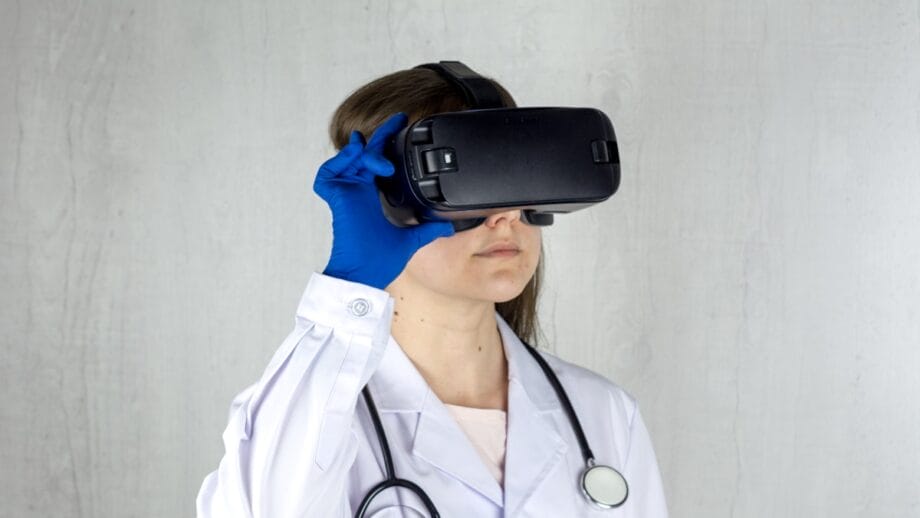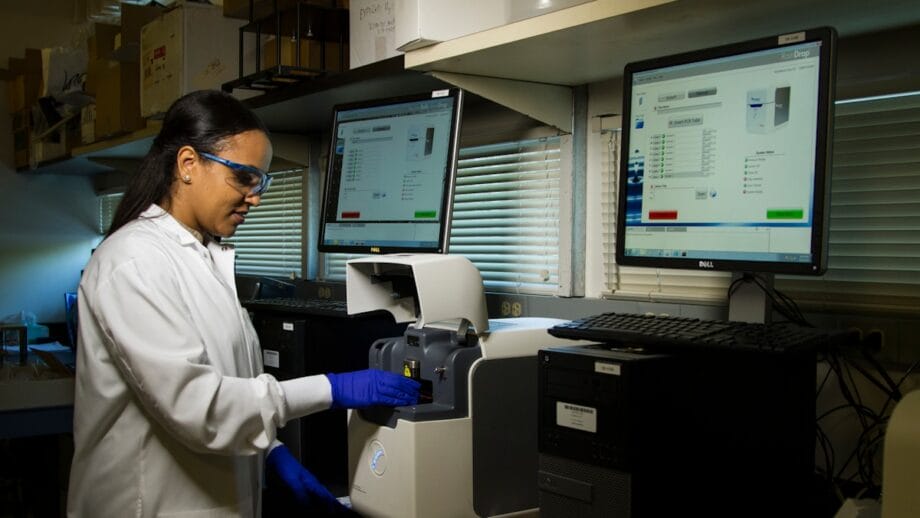In the environment of modern healthcare driven by constant advancements and an ever-increasing number of interventions, the prevention of medical mistakes is essential for preserving the well-being of the people in need of care. Advanced EMR is another that makes a big difference and can assist healthcare practitioners in minimizing their errors and enhancing patients’ well-being. In this way, EMR Software is creating a pathway for a safer and more efficient care delivery environment, it is saving lives and improving patients’ trust in their doctors.
Overview of EMR Technology
Health information technology is the use of information and communication systems to store patient records in the place of conventional paper documents. Electronic medical records (EMR) are computerized versions of a patient’s paper-based chart and comprise complete health information about the patient including clinical history, physician’s diagnosis, prescription details, treatment plan sum up, immunization record, known allergies, x-ray and other imaging results, and laboratory examinations. This shift has brought enhancement in the accessibility, as well as the quality and speed of handling of healthcare data.
Another major benefit of the EMR technology is that it is designed to offer medically affiliated data on the individual in question as soon as possible. Doctors, nurses, and other caregivers can get full medical records of a patient at the click of a button hence improving the quality of care. Also, EMR systems increase cooperation between numerous specialists because each of the involved specialists gets an updated and complete picture of the patient’s condition.
Sophisticated EMRs also have capabilities such as alerts over pharmaceutical interference, recalls about preventative health checks, and decision-making aids. Such capabilities assist in the omission of medical mistakes, and the improvement of patient safety. They also integrate aspects of the organization such as billing and scheduling, thus making efficiency with direct patient care possible.
Despite such advantages, EMR systems have some drawbacks: one of them is the necessity of significant staff training and alteration of work schedules. Still, as the technology continues to develop and is used optimally, Electronic Medical Record has the potential to create an enhanced, efficient, precise, and secure environment in healthcare facilities.

How EMR Technology Reduces Medical Errors?
With an effective EMR software application, patients’ safety can be greatly improved since occurrences of medical mistakes can be reduced. Here’s how:
Accurate Data Entry and Management
- Real-Time Updates: Electronic medical record systems ensure that the information that will be used in treating the patient is up to date to avoid the mishmash of old information being used on the patient.
- Standardized Forms: These forms help to reduce the variation of data input., there is a little chance of data being interpreted or transcribed incorrectly.
Automated Alerts and Reminders
- Medication Alerts: The EMR Software Solution is capable of alerting physicians about possible drug interactions and allergies and therefore avoiding adverse drug effects.
- Follow-Up Reminders: Things such as reminders of follow-up appointments and appointments for preventive check-ups are important features, which assist in making sure that some components of patient care are not left out.
Enhanced Communication and Collaboration
- Shared Access: EMR technology provides an integrated record that can be shared by all the providers on the health facility’s care team and updated simultaneously.
- Secure Messaging: The communication modules in EMR systems ensure that information is exchanged, from one professional to another, is effective, reliable, and done within the right time.
Decision Support Tools
- Evidence-Based Recommendations: An EMR encompasses clinical decision support which makes recommendations to help the provider in making a sound decision on the kind of treatment to administer.
- Diagnostic Assistance: They can assist in choosing among numerous possible diagnoses and recommend which tests should be conducted to minimize diagnostic mistakes.

Challenges and Limitations
Thus, while progressing EMR technology has huge potential to decrease medical mistakes, it has certain advantages and setbacks that practitioners face.
One of the challenges that act as a hindrance is the implementation cost of the strategy. Switching to a more advanced EMR system is costly in terms of money and time spent on staff education and training. This could be a big issue, especially for those health facilities with a small patient turnover hence they will be forced to spend a lot of money on the purchase of the recording equipment.
Technological factors are also a major problem since they hinder the evolution of organizations and thus the achievement of their goals. The new types of EMR systems require to be integrated into the current existing health care systems and it is not a small factor. There may be compatibility problems therefore day-to-day operations will be hindered and there can be issues with data migration as well.
Others are user training and adoption, factors that are very essential before a certain product is adopted. Several of the healthcare workers are occupational professionals and chronic time shortages suggest that they may not readily be able to adjust to modifications in systems. Reluctance to change, as well as the necessity to undergo knowledge Osaka Pg. 307 update, workloads, and human factors other than EMR can hinder the proper implementation of the technology, thus impacting its efficiency in the minimization of medical errors.
Challenging data privacy and security cannot be ruled out. Digital reproduction of patients’ data on health implies vulnerability to breach of patient’s information. The security of patient data is a very important factor and implementing measures to meet the set regulations such as HIPAA is essential to enhance trust.
Solving these issues is a complex process, meaning that, on the one hand, EMR systems should be developed as modern tools, and, on the other, the best solutions for their implementation should be found.
Future Trends and Innovations
EMR systems are systems that store and retrieve a patient’s complete medical history, and as technology advances, so do the possibilities in EMR systems. Here are some exciting future trends and innovations that promise to further enhance patient care and reduce medical errors:
1. Interoperation with AI & Machine learning
Since EMR is going to be integrated with AI and machine learning then the healthcare industry is expected to go through a drastic change. Such technologies can use such amounts to filter data and look for trends that may indicate a problem in the pipeline. For instance, if patients’ records indicate abnormal results of lab tests or numerous inconsistencies, AI can draw clinicians’ attention to them, thus offering an opportunity to avoid mistakes and enhance the outcomes for patients.

2. Role of Telemedicine and Remote Monitoring
There has been a great increase in the implementation of telemedicine especially after the pandemic, more so, the interoperability of EMR systems. Some tools for telemonitoring are synchronous and can set up information on patients independently, which guarantees that the doctors have access to the main data on the condition of the patient. This continuous flow of information can help increase the accuracy of diagnoses and treatments, thus decreasing the chances of adverse events that may stem from the system’s failure to update data on time.
3. Potential for Personalized Medicine
Modern Electronic Medical Record tools are undoubtedly setting the stage for individualized health care where therapies for diseases are developed about the patient’s genotype and case history. As a result of the incorporation of genetic data and the use of analytics in EMRs, physicians can set up many individualized treatments and possibly decrease the toxicity profiles of medications, in addition to increasing the efficacy of treatments.
4. Improvement of Interoperability and Data Exchange
Subsequent EMR systems are expected to have better integration capability, which will enable various healthcare givers to swap patient data. It can also remove the need for replicated examinations and treatments, decrease the possibility of clerical mistakes, and guarantee the physicians and other healthcare givers in a given patient’s case have equal access to the same information, to offer more customizable and efficient patient-centered care.
These innovations, as beneficial as they are, are not without difficulties and the specific tricky question of how to roll out such changes to overcome the difficulties and improve the services to clients, in patient-centered and safety-compliant ways will have to be tackled carefully. The prospects for EMR technology look promising since this technology is capable of turning the whole system of healthcare into a more effective, less error-prone, and focusing more on the patient’s needs.
Best Practices for Implementing EMR Systems
The activation of an EMR system is an excellent shift for any healthcare facility, and its effectiveness depends on the proper guidelines. First, ask all potential users of the system – doctors, nurses, IT personnel, and employees of the administration – what they need to get from the system.
User training is important; staff should be able to use the new technology without much difficulty. Introduce the new ICT strategy in phases to have time for fixing the challenges that are bound to occur before all implement the strategy. Feedback details should be aligned – solicit feedback from the staff to help you find ways to improve. Make sure that the patient data is protected according to the best data security standards.
Last but not least, implement system connectivity, allowing the integration with other healthcare IT solutions. Thus, by adopting the specified best practices, healthcare institutions will be able to optimize the utilization of EMR systems, which in turn will lead to the improvement of patients’ outcomes and error minimization. As you progress, the key idea is to achieve a proper change and to bring benefit not only to the staff members but also to patients.
Conclusion

To sum up, the EMR growth to the advanced technologies is a useful tool that can minimize medical mistakes, guarantee precise data handling, and improve the entire interaction among healthcare providers. Due to the semi-automated nature of the alerts, the decision support tools, and the continuous updates, EMR systems promote a safer environment in a healthcare setting. Accepting these means therefore enhances patients’ care delivery and consequently the general confidence in the healthcare system.





